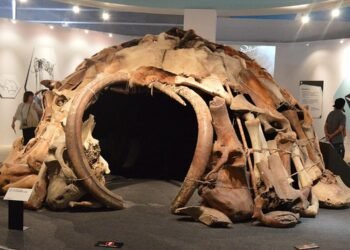According to a recent announcement made by Egypt’s Ministry of Tourism and Antiquities, a Buddha statue that dates back to the 2nd century CE has been found by a team of American-Polish archaeologists at an ancient Egyptian site situated near the Red Sea.

The ancient seaport, Berenice Troglodytica, also known as Berenike, is located on the western coast of the Red Sea in Egypt and was founded by Ptolemy II Philadelphus, who named it after his mother, Berenice I of Egypt.
It is a marble Buddha statue in the forecourt of the town’s early Roman period temple dedicated to the goddess Isis.
The statue, which stands at 71 cm tall, portrays Buddha standing and holding his clothing in his left hand.
A radiant halo of sunlight surrounds the statue’s head, a common feature in Buddhist iconography and religious texts that represents how Lord Buddha emitted rays of light during his time of nirvana and Parinirvana.
The discovery was made in January-February of 2022 but has only recently been made public by the Supreme Council of Antiquities of Egypt. The expedition was led by Steven Sidebotham of the University of Delaware and Mariusz Gwiazda of the Polish Centre of Mediterranean Archaeology at the University of Warsaw. The permit was held by PCMA UW in collaboration with the Egyptian Ministry of Tourism and Antiquities.
Dr. Marius Goyazda posits that the statue’s stone possibly came from a location situated to the south of Istanbul.
There’s a conjecture that traders from India commissioned the statue’s creation in the vicinity and devoted it to the temple close by. In the course of excavating the temple, an inscription in Hindi (Sanskrit) was unearthed, dated to the reign of Roman Emperor Philip the Arab (244 to 249 CE), along with Greek inscriptions originating from the 1st century BCE.
During the excavation, archaeologists discovered two coins originating from the Satavahana kingdom, an ancient Indian dynasty that was situated in the Deccan region.
The Satavahanas were among the first Indian kingdoms to mint coins with images of their rulers, and the two coins that were unearthed in Berenice Troglodytica date back to approximately the 2nd century CE.
This discovery indicates that there were significant trading connections between the Roman Empire and India, according to the Egyptian authorities.
Mostafa Waziri, the secretary general of the Supreme Council of Antiquities, stated that Egypt was located in the center of the trade route that linked the Roman Empire to many parts of the ancient world.
The discovery of the Buddha statue is an important archaeological find as it sheds light on the cultural and religious exchanges that occurred between different civilizations in ancient times. This discovery adds to our knowledge of the history and diversity of the ancient world.























